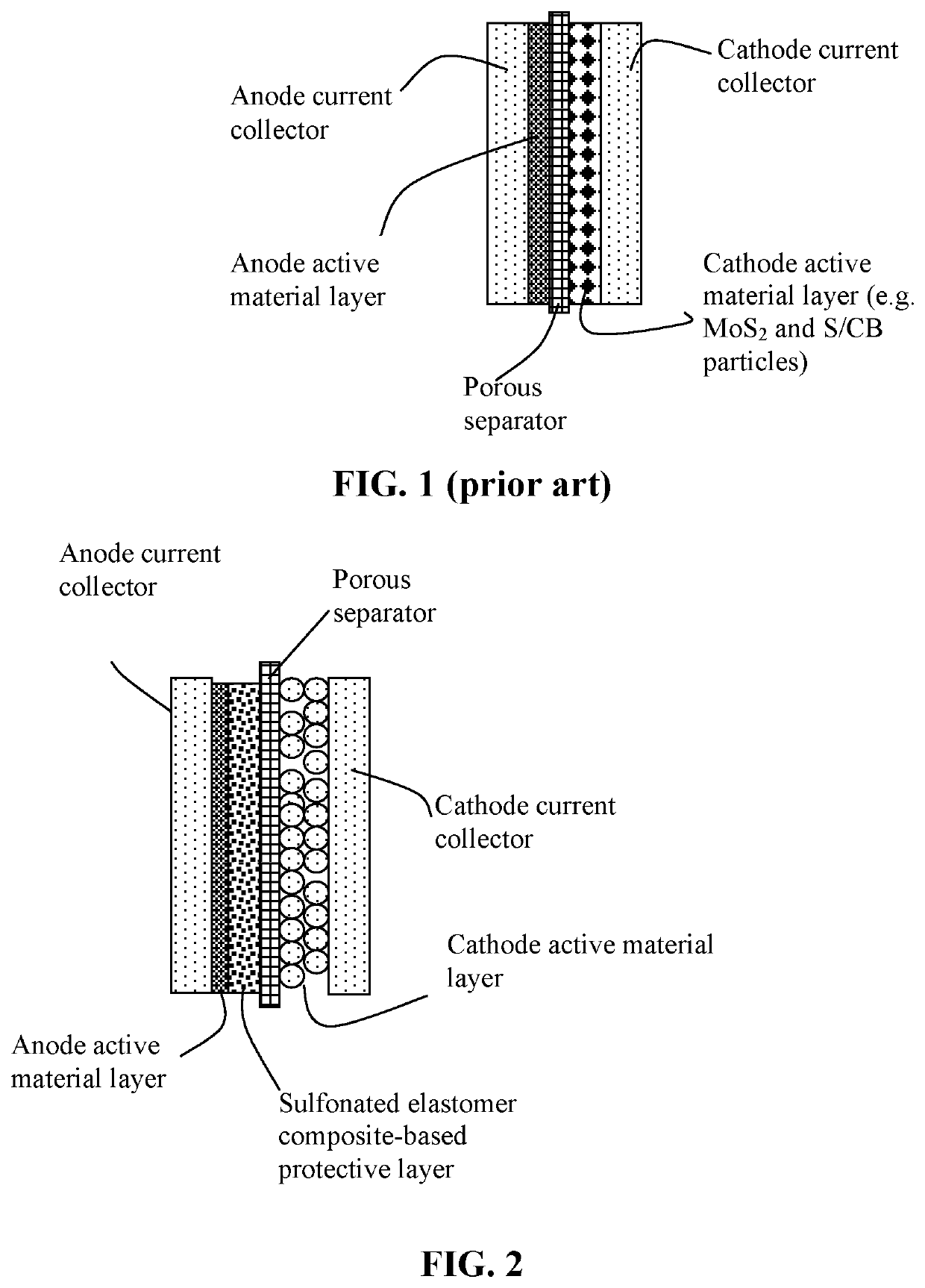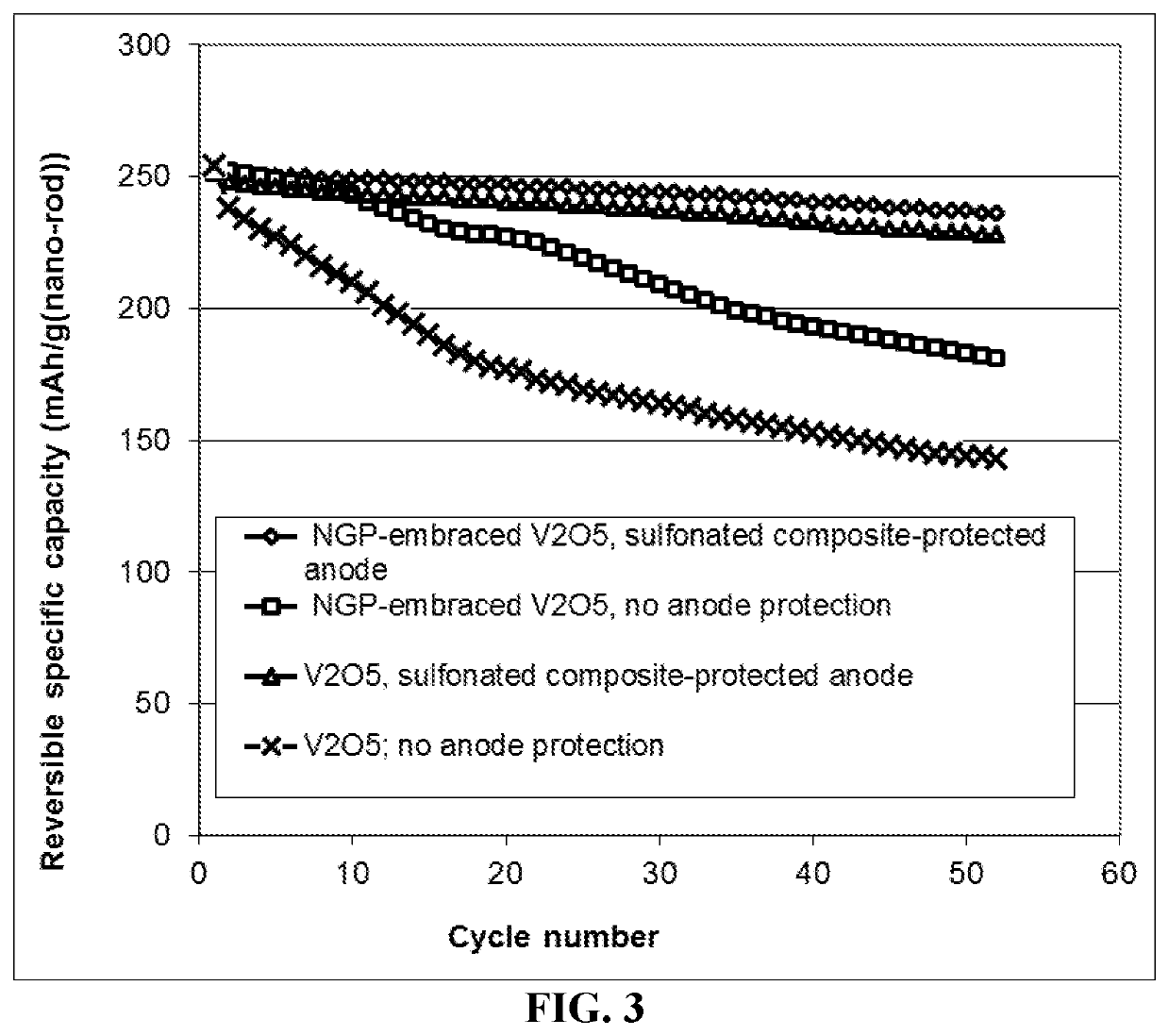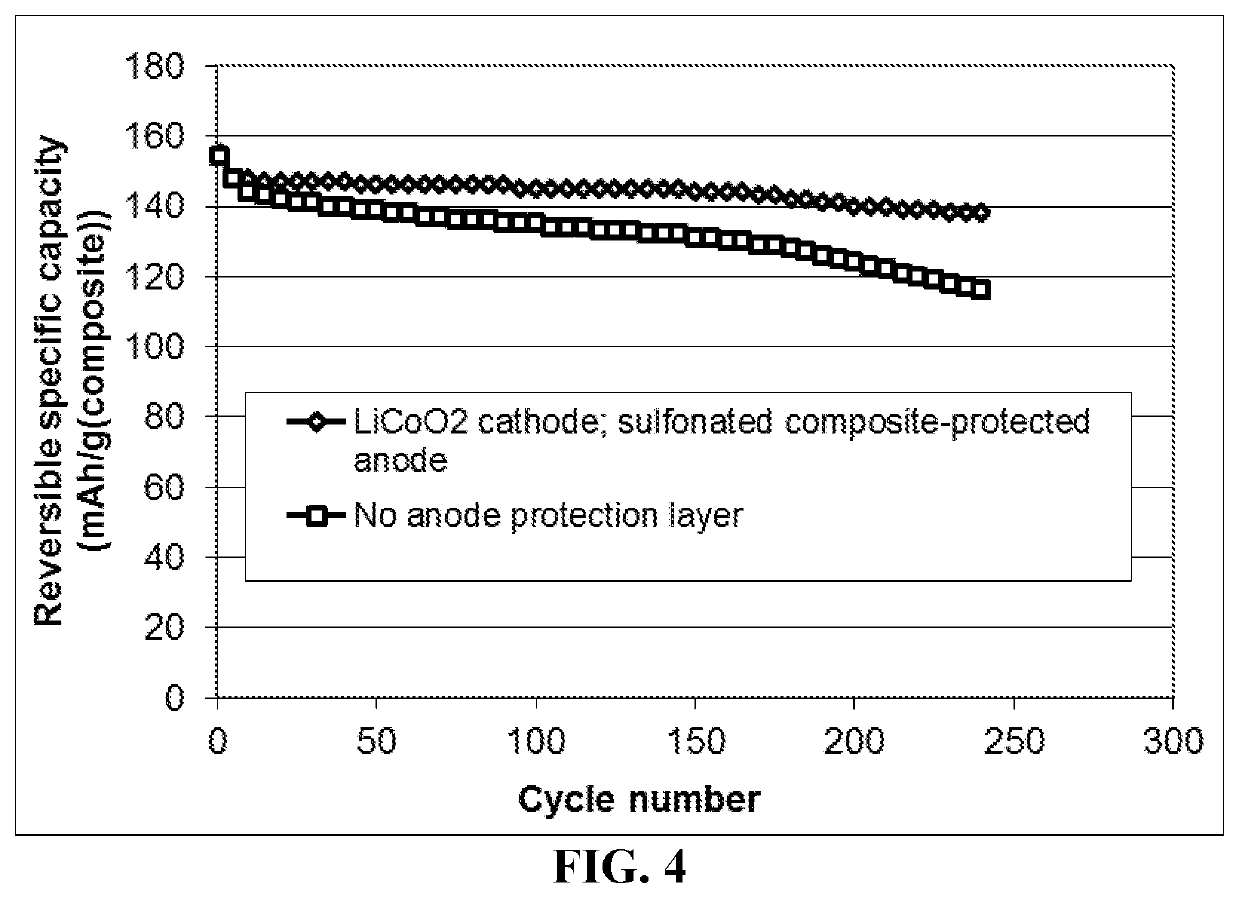Lithium metal secondary battery featuring an anode-protecting layer
a secondary battery and lithium metal technology, applied in the field of rechargeable lithium metal batteries, can solve the problems of internal electrical shorting, thermal runaway, unsafe conditions in the battery, etc., and achieve the effect of reducing or eliminating the lithium metal dendrite and more conducive to uniform deposition of li metal
- Summary
- Abstract
- Description
- Claims
- Application Information
AI Technical Summary
Benefits of technology
Problems solved by technology
Method used
Image
Examples
example 1
on of Triblock Copolymer Poly(Styrene-Isobutylene-Styrene) or SIBS
[0108]An example of the sulfonation procedure used in this study is summarized as follows: a 10% (w / v) solution of SIBS (50 g) and a desired amount of graphene oxide sheets (0.15% to 40.5% by wt.) in methylene chloride (500 ml) was prepared. The solution was stirred and refluxed at approximately 40 8 C, while a specified amount of acetyl sulfate in methylene chloride was slowly added to begin the sulfonation reaction. Acetyl sulfate in methylene chloride was prepared prior to this reaction by cooling 150 ml of methylene chloride in an ice bath for approximately 10 min. A specified amount of acetic anhydride and sulfuric acid was then added to the chilled methylene chloride under stirring conditions. Sulfuric acid was added approximately 10 min after the addition of acetic anhydride with acetic anhydride in excess of a 1:1 mole ratio. This solution was then allowed to return to room temperature before addition to the r...
example 2
of Sulfonated Polybutadiene (PB) by Free Radical Addition of Thiolacetic Acid (TAA) Followed by In Situ Oxidation with Performic Acid
[0111]A representative procedure is given as follows. PB (8.0 g) was dissolved in toluene (800 mL) under vigorous stirring for 72 h at room temperature in a 1 L round-bottom flask. Benzophenone (BZP) (0.225 g; 1.23 mmol; BZP / olefin molar ratio=1:120) and TAA (11.9 mL; 0.163 mol, TAA / olefin molar ratio=1.1) and a desired amount of graphene sheets (0.1%-40% by wt.) were introduced into the reactor, and the polymer solution was irradiated for 1 h at room temperature with UV light of 365 nm and power of 100 W.
[0112]The resulting thioacetylated polybutadiene (PB-TA) / graphene composite was isolated by pouring 200 mL of the toluene solution in a plenty of methanol and the polymer recovered by filtration, washed with fresh methanol, and dried in vacuum at room temperature (Yield=3.54 g). Formic acid (117 mL; 3.06 mol; HCOOH / olefin molar ratio=25), along with a...
example 3
of Sulfonated SBS
[0114]Sulfonated styrene-butadiene-styrene triblock copolymer (SBS) based elastomer was directly synthesized. First, SBS (optionally along with graphene sheets) is first epoxidized by performic acid formed in situ, followed by ring-opening reaction with an aqueous solution of NaHSO3. In a typical procedure, epoxidation of SBS was carried out via reaction of SBS in cyclohexane solution (SBS concentration=11 g / 100 mL) with performic acid formed in situ from HCOOH and 30% aqueous H2O2 solution at 70° C. for 4 h, using 1 wt % poly(ethylene glycol) / SBS as a phase transfer catalyst. The molar ratio of H2O2 / HCOOH was 1. The product (ESBS) was precipitated and washed several times with ethanol, followed by drying in a vacuum dryer at 60° C.
[0115]Subsequently, ESBS was first dissolved in toluene to form a solution with a concentration of 10 g / 100 mL, into which was added 5 wt % TEAB / ESBS as a phase transfer catalyst and 5 wt % DMA / ESBS as a ring-opening catalyst. Herein, TEA...
PUM
 Login to View More
Login to View More Abstract
Description
Claims
Application Information
 Login to View More
Login to View More - R&D
- Intellectual Property
- Life Sciences
- Materials
- Tech Scout
- Unparalleled Data Quality
- Higher Quality Content
- 60% Fewer Hallucinations
Browse by: Latest US Patents, China's latest patents, Technical Efficacy Thesaurus, Application Domain, Technology Topic, Popular Technical Reports.
© 2025 PatSnap. All rights reserved.Legal|Privacy policy|Modern Slavery Act Transparency Statement|Sitemap|About US| Contact US: help@patsnap.com



